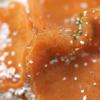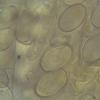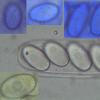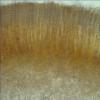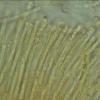
09-12-2025 12:06
 Andgelo Mombert
Andgelo Mombert
Bonjour,Je recherche l'article concernant Hypobryo

12-12-2025 18:39
Mirek GrycHello everyone.Macrofeatures similar to Mollisia b

07-12-2025 16:07
Arnold BüschlenHallo, ich habe in einer Moos-Aufsammlung (epiphy

08-12-2025 21:04
Mark Stevens"Hello everyone,I'm relatively new to microscopy (

08-12-2025 18:59
 Lothar Krieglsteiner
Lothar Krieglsteiner
.. found by a seminar-participant, I do not know t

08-12-2025 17:37
 Lothar Krieglsteiner
Lothar Krieglsteiner
20.6.25, on branch of Abies infected and thickened
Cheilymenia?
Uwe Lindemann,
04-04-2013 00:40
I found recently a little operculate discomycete of which I have no clear idea for determination. Before examination with the microscope I thought of Aleuria, Kotlabaea or something similar but after examination I'm really surprised because the spores have a striate perispore but the apos have no hairs.
Because of the striate perispore my hypothesis is Cheilymenia.
Moravec describes in his monograph several hairless Cheilymenia but none of them fits well with my collection. The most similar is C. theleboloides f. glabra but C. theleboloides should be more yellowish than orange....
Maybe you have another idea about my find. Please let me know. Thanx a lot in advance!
Here are some data and pictures:
Diam. up to 0,7 mm
Asci operculate, 8-spored, Iod-, 190-200 x .14-15 µm
Spores hyalin, thickwalled, ellipsoid, immature with inconspicious hyalin "oildrops"(?), mature eguttulate with conspicious nucleus, sometimes with brownish granules inside, with a STRIATE PERISPORE, (16)17-19,5 x (9,5)10,5-12 µm
Paraphyses: filiform, apically roundish, with orange droplets
Medulla: textura intricata of thinwalled cells
Ectale Excipulum: textura globulosa of thinwalled cells (NO HAIRS at margin or at the upper outside of ectal excipulum, only some thickwalled hyaline hypae at the base)
Ecology: on sandy soil with debris which is greenish from algae
Location/Date: Mallorca, in the Dunes of Es Trenc, 9. 3. 2013)
Uwe
René Dougoud,
04-04-2013 09:18
Re : Cheilymenia?
Cher Collègue,
Il ne fait pas de doute qu'il s'agit d'une espèce du genre Cheilymenia. Vous indiquez que la paroi sporal est épaisse, mais vous montez une ascospores immature ! Il faut savoir que dans ce genre et autres genres coprophiles, en général, les ascospores présentent dans la jeunesse une paroi épaisse qui, par la suite, s'amincie.
Les apothécies sont suffisemment grandes pour pouvoir obtenir une sporée. A partir de là, les ascospores pourront être observées et mesurées. Il faut encore rechercher les poils qui se trouvent sur l'excipulum, il y en a certainement.
Cette espèce, à ascospores striées, ce qui constitue une ornementation bien typique, est sans doute déterminable avec la publication de Moravec.
Cordialement
René
Il ne fait pas de doute qu'il s'agit d'une espèce du genre Cheilymenia. Vous indiquez que la paroi sporal est épaisse, mais vous montez une ascospores immature ! Il faut savoir que dans ce genre et autres genres coprophiles, en général, les ascospores présentent dans la jeunesse une paroi épaisse qui, par la suite, s'amincie.
Les apothécies sont suffisemment grandes pour pouvoir obtenir une sporée. A partir de là, les ascospores pourront être observées et mesurées. Il faut encore rechercher les poils qui se trouvent sur l'excipulum, il y en a certainement.
Cette espèce, à ascospores striées, ce qui constitue une ornementation bien typique, est sans doute déterminable avec la publication de Moravec.
Cordialement
René
Uwe Lindemann,
05-04-2013 00:18
Re : Cheilymenia?
Hello René,
thank you very much for your comment! You are completely right. The spore which I show are immature but I saw no other.
I checked macroscopically and microscopically again the apos but I found no hairs on the outside (margin and upper flancs). There are only many hyphoid hairs on the lower flancs and at the base which are part of a dense Subiculum. That's all.
Best, Uwe
thank you very much for your comment! You are completely right. The spore which I show are immature but I saw no other.
I checked macroscopically and microscopically again the apos but I found no hairs on the outside (margin and upper flancs). There are only many hyphoid hairs on the lower flancs and at the base which are part of a dense Subiculum. That's all.
Best, Uwe
René Dougoud,
05-04-2013 08:48
Re : Cheilymenia?
OK,
Cela nous conduit effectivement à la section Striatisporae et à C. theleboloides f. glabra. S'agissant de la couleur, je ne pense pas qu'elle soit d'une très grande importance. Les pigments caroténoïdes, en fonction de leur diversités et quantités sont susceptibles de faire varier la couleur de jaune pale à orange. Voir Dougoud 2013 "Contribution à l'étude des discomycètes, version 2013", au chapitre hyménium. Ascomycete.org, 5 (2) : 63-89.
Cordialement
René
Cela nous conduit effectivement à la section Striatisporae et à C. theleboloides f. glabra. S'agissant de la couleur, je ne pense pas qu'elle soit d'une très grande importance. Les pigments caroténoïdes, en fonction de leur diversités et quantités sont susceptibles de faire varier la couleur de jaune pale à orange. Voir Dougoud 2013 "Contribution à l'étude des discomycètes, version 2013", au chapitre hyménium. Ascomycete.org, 5 (2) : 63-89.
Cordialement
René

